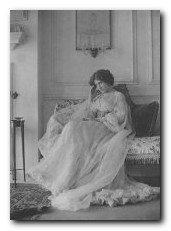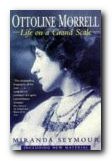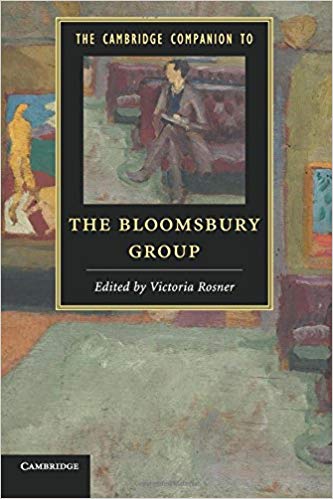free pages from our English Language software program
Morphology – definition
![]() Morphology is the study of meaning in individual units of language.
Morphology is the study of meaning in individual units of language.
![]() It is concerned with the structure of words.
It is concerned with the structure of words.
![]() The smallest unit of meaning is a morpheme.
The smallest unit of meaning is a morpheme.
![]() Morphemes can be classified as either free or bound.
Morphemes can be classified as either free or bound.
Examples
![]() A free morpheme is a unit of meaning which can stand alone or alongside another free or bound morpheme.
A free morpheme is a unit of meaning which can stand alone or alongside another free or bound morpheme.
![]() These are usually individual words, such as
These are usually individual words, such as
| lid | sink | air | car |
![]() A bound morpheme is a unit of meaning which can only exist alongside a free morpheme.
A bound morpheme is a unit of meaning which can only exist alongside a free morpheme.
![]() These are most commonly prefixes and suffixes:
These are most commonly prefixes and suffixes:
| ungrateful | insufficient | |
| childish | goodness |
Use
![]() A knowledge of morphology creates an awareness of meaning at a sub-lexical level. That is, we can deconstruct a word and consider its component parts.
A knowledge of morphology creates an awareness of meaning at a sub-lexical level. That is, we can deconstruct a word and consider its component parts.
![]() The stems, roots, prefixes, and suffixes of words can be recognised. This can throw light on etymology (the origins of the word) thus giving us more power to communicate efficiently.
The stems, roots, prefixes, and suffixes of words can be recognised. This can throw light on etymology (the origins of the word) thus giving us more power to communicate efficiently.
![]() NB! The term comes from the Greek word morph, meaning shape or form.
NB! The term comes from the Greek word morph, meaning shape or form.
![]() Free morphemes are units of meaning which cannot be split into anything smaller, as in the following examples:
Free morphemes are units of meaning which cannot be split into anything smaller, as in the following examples:
| tree | gate | pillow | ||
| butter | flower | rhinoceros |
![]() However, the terms ‘gate’, ‘butter’ and ‘flower’ can also exist alongside another free morpheme. The following examples comprise two free morphemes
However, the terms ‘gate’, ‘butter’ and ‘flower’ can also exist alongside another free morpheme. The following examples comprise two free morphemes
| gatepost | buttermilk | sunflower |
![]() Bound morphemes are also units of meaning which cannot be split into anything smaller. However, they are different from free morphemes because they cannot exist alone. They must be bound to one or more free morphemes. Almost all prefixes and suffixes are bound morphemes.
Bound morphemes are also units of meaning which cannot be split into anything smaller. However, they are different from free morphemes because they cannot exist alone. They must be bound to one or more free morphemes. Almost all prefixes and suffixes are bound morphemes.
| Prefixes | asymmetrical, subordinate unnecessary, empower |
|
| Suffixes | cowardice, minty fruitful, swimming |
![]() The following words are made up of two free morphemes or components which could stand alone and retain their meaning.
The following words are made up of two free morphemes or components which could stand alone and retain their meaning.
| inkwell | mothball | |
| sunflower | slapstick |
![]() Note that morphemes can only be classified according to their given semantic context.
Note that morphemes can only be classified according to their given semantic context.
![]() Take for example the word ‘elephant’ which is a free morpheme. Although it is a lengthy word, it cannot be split up into any smaller units of meaning within this particular context. That is, the word ‘elephant’ refers to a large grey mammal with a trunk and tusks which is indigenous to India and Africa.
Take for example the word ‘elephant’ which is a free morpheme. Although it is a lengthy word, it cannot be split up into any smaller units of meaning within this particular context. That is, the word ‘elephant’ refers to a large grey mammal with a trunk and tusks which is indigenous to India and Africa.
![]() The final three letters of elephant may spell ‘ant’, but that unit of meaning does not exist in the context of the term ‘elephant’.
The final three letters of elephant may spell ‘ant’, but that unit of meaning does not exist in the context of the term ‘elephant’.
![]() Now take the word ‘ant’ as a separate unit of meaning referring to a small insect. In that context ‘ant’ is a free morpheme. Add another free morpheme in the form of ‘hill’ and we have a word comprising two free morphemes – ‘anthill’.
Now take the word ‘ant’ as a separate unit of meaning referring to a small insect. In that context ‘ant’ is a free morpheme. Add another free morpheme in the form of ‘hill’ and we have a word comprising two free morphemes – ‘anthill’.
![]() The unit ‘ant’ can also be classified separately as a bound morpheme in yet another context. The term ‘ant’ can act as a prefix in the word ‘antacid’. As such, it is a bound morpheme because its meaning only exists in conjunction with the free morpheme ‘acid’.
The unit ‘ant’ can also be classified separately as a bound morpheme in yet another context. The term ‘ant’ can act as a prefix in the word ‘antacid’. As such, it is a bound morpheme because its meaning only exists in conjunction with the free morpheme ‘acid’.
Self-assessment quiz follows >>>
© Roy Johnson 2003
English Language 3.0 program
Books on language
More on grammar
 Ottoline Morrell (1873-1938) features in the history of the
Ottoline Morrell (1873-1938) features in the history of the 

 1. Writer’s block is much more common than most people imagine. But it can be overcome. Don’t imagine that you should be able to write impeccably at your first attempt. Most successful writers make several drafts of their work. They edit what they write, correct mistakes, make additions and deletions, and generally re-write extensively. Writing fluently and clearly is an advanced skill.
1. Writer’s block is much more common than most people imagine. But it can be overcome. Don’t imagine that you should be able to write impeccably at your first attempt. Most successful writers make several drafts of their work. They edit what they write, correct mistakes, make additions and deletions, and generally re-write extensively. Writing fluently and clearly is an advanced skill.